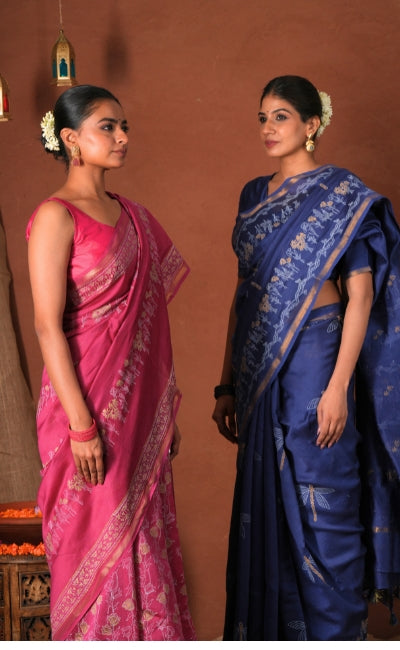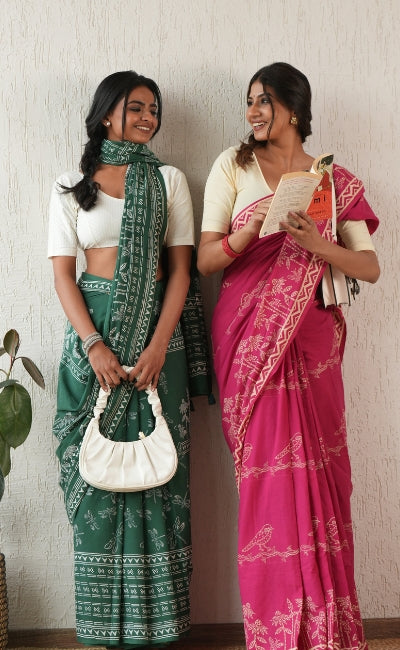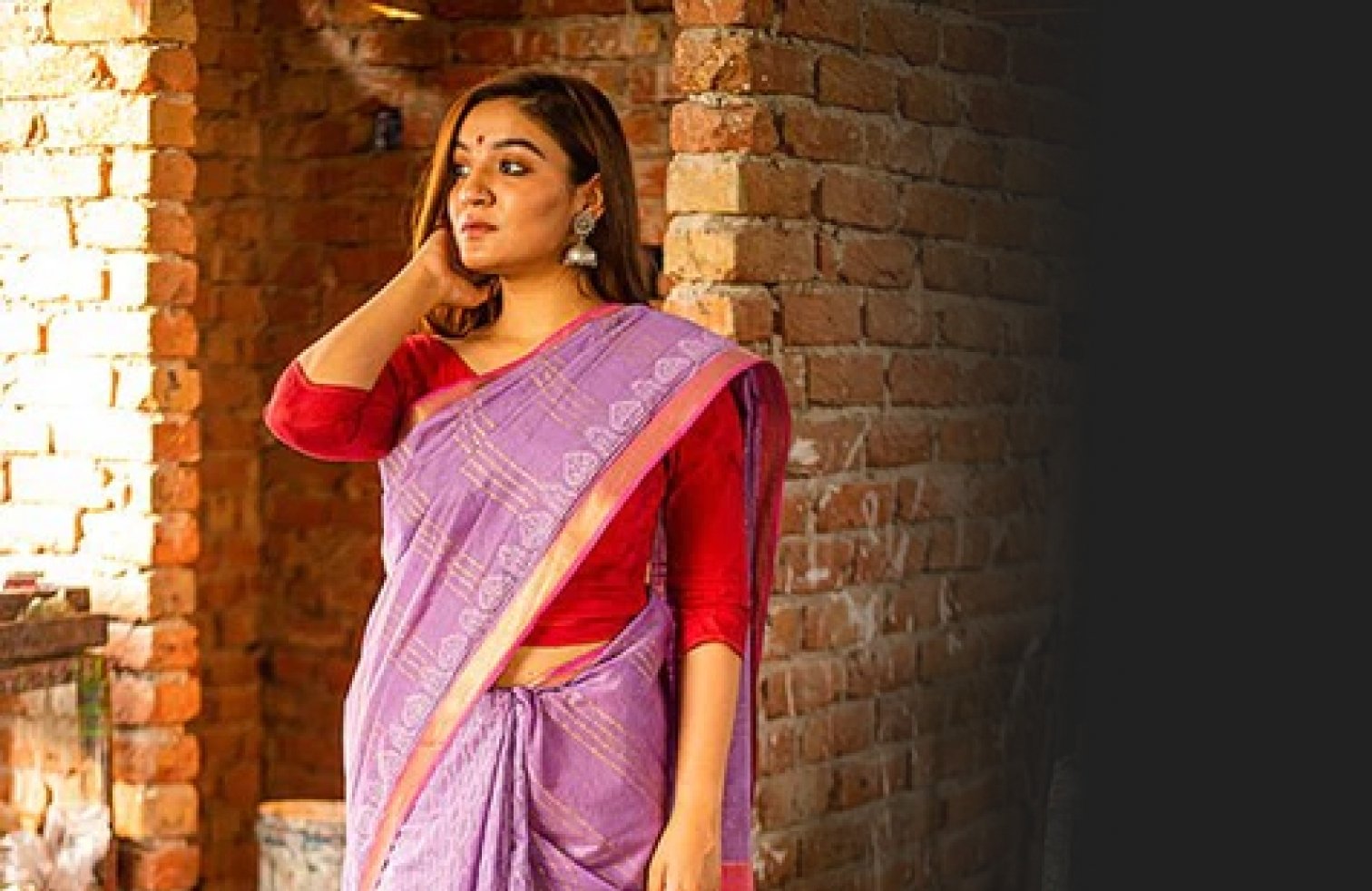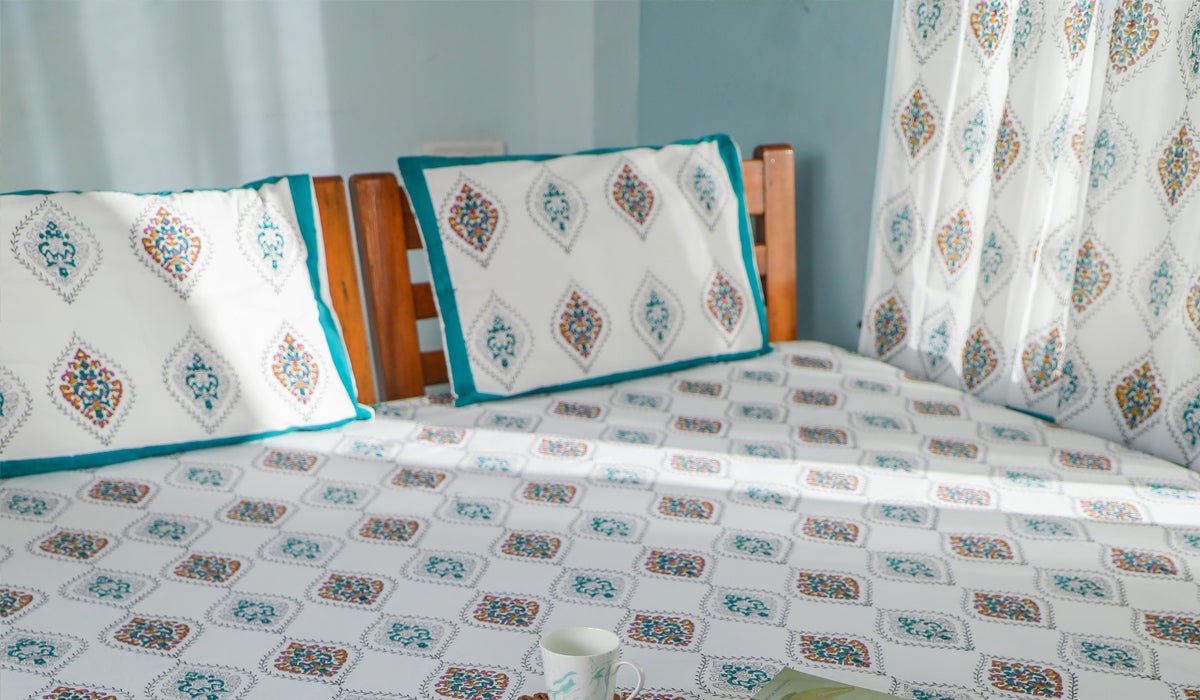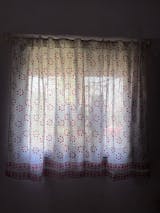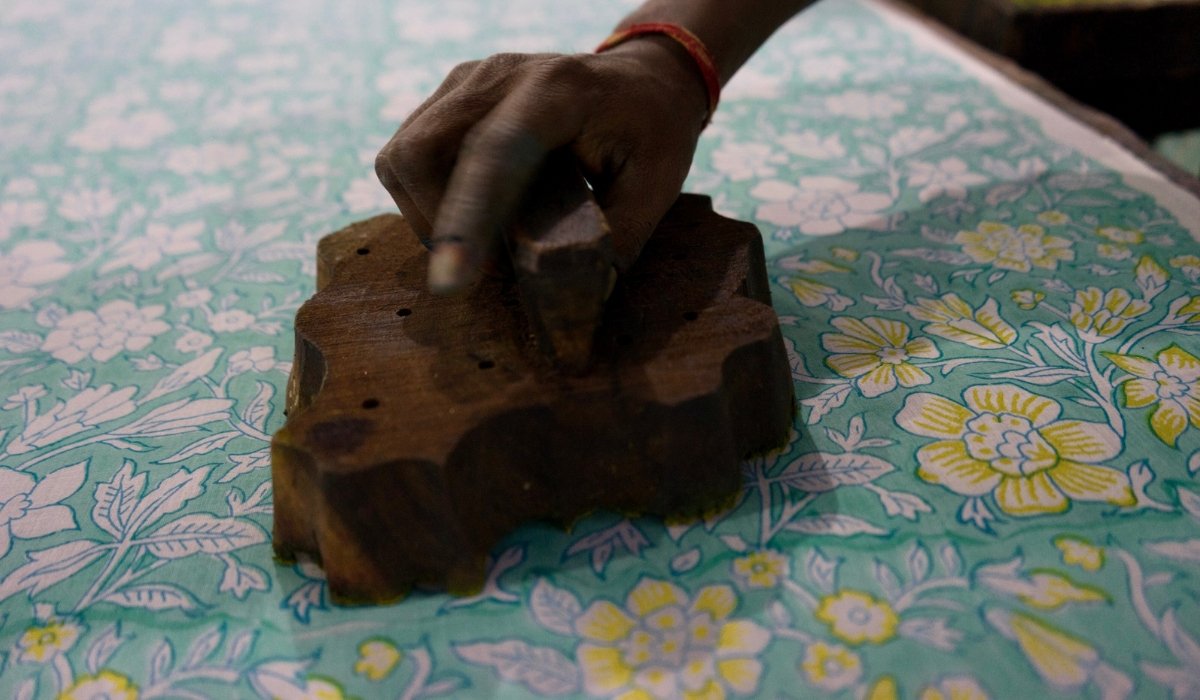
India's Rich History Of Block Printing In India
History Of Block Printing
The art of block printing is one of the country's long-standing artistic and craft traditions that has continued to develop in a modern form.
Block printing is the art of using a carved wooden block that has been painted or dyed by hand to print on a piece of paper or fabric.
However, a series of motifs or a design first needs to be carved into a block of wood, or a raised design should be made using metal strips or pins. To create patterns, the raised portion of the block is dipped in ink or dye and then pressed into a piece of fabric or paper.
Block printing, a centuries-old art form, is still represented in different ways throughout India, including the Andhra Pradesh-based Kalamkari, the Rajasthan-based Dabu and Sanganeri, the Gujarat-based Ajrakh, the Madhya Pradesh-based Bagh, and others. Every type of block printing has been carefully honed by expert artisans, and each one has a unique colour scheme and design elements that distinguish it from the others.
The History of Block Printing
Indian block-printed fabric fragments have been discovered in the Egyptian civilization's ruins. According to art historians, block printed textiles originated during the Indus Valley Civilization, which flourished roughly between the years 3500 and 1300 BC. This assertion is supported by the finding of needles, spindles, and dyed cotton fibre in the Mohenjo Daro ruins. It's also simple to connect the dots and realise that the export of Indian block-printed textiles must have been a thriving industry.
Under the Mughals' patronage, the skill of block printing was further promoted and refined, leading to the invention of a variety of motifs that are still in use today.
The Block Printing Process
Block printing is a meticulous and time-consuming process. The blocks themselves take anywhere from 10 to 15 days to make and must be constructed with care and attention. Blocks are handcrafted in a variety of intricate designs using wood, such as teak. On paper, those designs are initially drawn with a pencil or chalk paste. The blocks are soaked in oil for 10 to 15 days after the design has been etched onto the surface to soften the stiff wood.
Block printing actually starts with cotton fabric lengths which have been cleaned to get rid of any starch. This is the ideal time to tie dye if necessary. If a garment has been dyed, washing it ensures that any extra colour is removed. The fabric is stretched taut and pinned onto the printing surface after being sun-dried. On a tray with adhesive and a pigment binder, the colours needed for printing are created in parallel and kept ready. This guarantees a uniform distribution of the colour over the block surface and a soft base for the colour.
The prepared blocks are coloured, then placed on the fabric after being pressed. Repeating this procedure allows the design to cover the entire width and length of the fabric. In order to prevent smudges or breaks in the motifs and throughout the finished design, the artisans must maintain precision. If there are several colours or patterns, they are made with various building blocks. Only once the original printed surface has dried can they be used.
The printed fabrics are then left to dry in the sun and rolled up in newspaper sheets to prevent sticking. Finally, the fabric is steamed, washed, dried and ironed before it can be packed for sale or use.
What makes Block Printing Unique
Block printing requires a lot of manual labour, long physical hours, and meticulous attention to detail. Even the minute flaws and differences produced by the labor-intensive process of transferring an impression from a block to fabric lend character and charm that are otherwise hard to come by.
Contemporary Expressions in Block Printing
We all value handcrafted products more than mass-produced, machine-made items, and block printed fabrics that have been made with such care, attention to detail, and love are among the most prized. Many of our creative partners choose the fantastic and eco-friendly hand-block printing technique, which they employ to create a variety of unique products, including purses, note books, coasters, fashion jewellery, art prints, and more in addition to clothing, wraps, bed and home linens.


